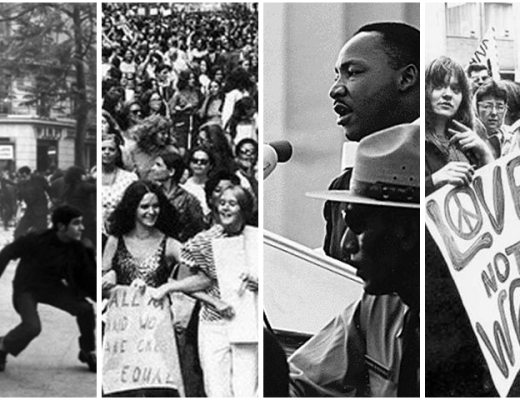Folk music is easily identifiable when you hear it, with the rustic twang in the instrumentals and the narratively vivid lyrics that instantly transport you to the hometown roots of the song.
When it comes to what defines folk music, things get a little more complex, or at least highly ambivalent, which mostly boils down to the long and complicated history of folk music which unravelled simultaneously across the globe as it sprung up in villages to capture the culture of them before it became an aural commodity.
The term itself originated in the 18th century, but its history stretches much further back than that. What folk music means today with Mumford and Sons and the Lumineers on the airwaves is a world away from what folk music represented before the first song was recorded in 1860.
What is Folk Music?
Traditionally, folk music was preservation of history. Folk songs got passed down from generation to generation; they spoke of hometown struggles, strife, and victory. In the absence of recording equipment that hadn’t yet been invented, there was no better way to aurally pass down history in a social and culturally engaging way.
As the ages slipped by, the verses in the folk songs were modernised to fit in with the times. Unlike every other genre, folk music isn’t for the virtuosos and the artists that have been studying music theory for decades. Its essence is its accessibility, which means that many members of the community could perform the music on the instruments available.
Even though when you think of folk artists, Bob Dylan, Woody Guthrie and Crosby, Stills & Nash come to mind – that is just a white-washed and Americanised version of folk music history. France, Italy, Germany, India, Africa and Asia all had their take on folk, though it went by many other names.
Folk music was never invented for popular consumption and mainstream appeal, but that didn’t get in the way of the success of Ben Harper, Cat Stevens, The Proclaimers and Simon and Garfunkel, who found decade-spanning international adoration. After the folk revival in the 20th century, the term, contemporary folk music, arrived as a signifier away from the traditional old-time music style.
After the mainstream commodification of folk music, its original meaning and utility were skewed; folk music no longer needed to be passed down the generations to be preserved – CDs and Spotify took care of that for us. But that folky sound remained desirable all the same, which led to artists borrowing melodies from traditional sources and utilising more archaic music instruments, including banjos, flutes, and fiddles to use in their pop and rock modern styles. In 2022, some of the top contemporary folk artists include Lonesome River Band, Of Monsters and Men, Fleet Foxes, Iron and Wine, Passenger and Mumford and Sons.
–
For more of an idea of the diversity of folk music, check out some of our folk music blogs. We’ve covered folk artists from across the globe, including the Australian singer-songwriter Jacob Lee, who has become a viral sensation as an independent artist. Brighton’s art-folk pioneer, Jacko Hooper, and JR August, who became Croatia’s number 1 artist after his debut album, Dangerous Waters.


No Comments